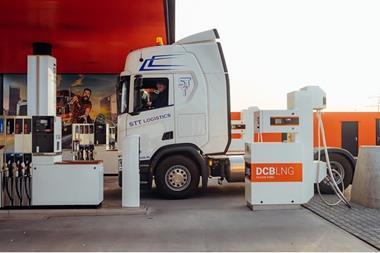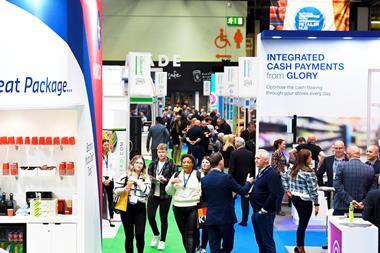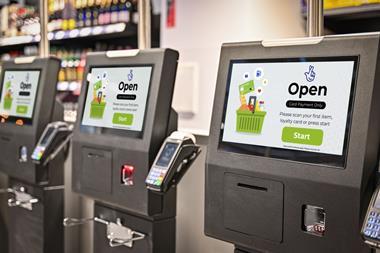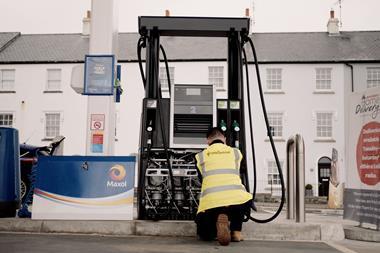Headaches with a non-standard set-up on software plus how AI is helping one retailer target shoplifters

Glitches in a very non-standard set up
Sebastian Nonis, who runs Forfar Rd Service Station in Dundee, asked Service Centre to try to intervene in the ongoing problems he has with his software from TLM.
He said that from September 7 (the day the new chip & pin pads were installed) the card mapping had not been sorted out. He commented: “For the software update we paid £250 +VAT but it’s been a disaster. Been reported so many times to TLM via email and help desk, matter not been sorted out yet. This has been a very poor show from TLM.”
He added that the company did not seem interested in solving it. “Bunker volumes cannot reconcile properly.”
Sebastian said that the business takes Jet and Morgan fuel cards but these don’t show on the end-of-day report. “They must be mapped to somewhere?”
He has since updated me and says that one of the engineers did partly fix the problem and asked him to restart both tills. “One till is not working, comes up as ‘Waiting for Server’. Phoned the help number (very poor customer service and background dog barking so take it it’s not the UK call centre).”
I contacted the company and Bob Laidlaw, chief operating officer at TLM Technologies, replied: “Firstly, we are sorry that the resolution to these issues has been taking much longer than we would normally expect and falls below the standards we set ourselves. The initial change was a straightforward update following the installation of a new Sagepay EFT Terminal. The client then requested some subsequent changes to card mapping as these seemed to have changed during the upgrade process – these changes were bespoke to the site. We are continuing to work on an outstanding issue where two cards from different schemes are required to map to the same payment heading along with third parties – this is not a standard set-up.
“With regard to the comments from Mr Nonis about the support centre I can confirm that our first line is based in Sharm El Sheikh, Egypt, and is supplied by a company set up by a former UK-based TLM employee. All employees possess good English language skills.
“There may be some background noise as this office is in a busy commercial area. On average, in September, 96% of calls made to us were answered by an analyst with 2% being presented to our voicemail box – an option given to all callers. The average speed of answer during the month was 19 seconds. We closely monitor call traffic through large screens in the offices – example attached from today.” (There was indeed an example attached.)
“We will continue to work to a full resolution of these issues to the satisfaction of Mr Nonis.
Eyes in the back of their heads
According to Office of National Statistics data incidents of shoplifting had risen 21% in the 12 months to March 2022.
This leads me to the question: would you use artificial intelligence (AI) to catch shoplifters? I’ve been talking to Aaruran Sivanathan who manages Hales Service Station in Norwich, reckoned to be the first in the country to use AI. Mind you, it’s a big store – it has eight aisles and 15 cameras, nine of them using AI software – and it had been losing around £350-£400 a month to shoplifters.
He says that has reduced now, “although not by 100%”, but he expects this to improve as the system learns as it goes. It is costing them around £270 a month for the AI, on a deal. The store got the software installed 11 months ago and Aaruran put signs up to warn would-be thieves.
The smart AI technology uses software from Veesion which can be connected to the existing cameras and security network through the internet. It then automatically monitors all the cameras for potential shoplifting activity.
Unlike security staff, who are able to monitor only a few areas at a time, the software is able to monitor all cameras simultaneously.
The system is able to spot shoplifters in five different ways: shoving products inside their jacket or trousers; concealing products inside buggies; taking too many products from the shelves (to resell the goods); opening a packet and consuming the product in-store; and placing products in a bag or backpack instead of their shopping basket or trolley.
The tech communicates to retailers via an app called ‘Telegram’.
When the AI detects any suspicious gesture, it sends a short video clipping of the shoplifter to staff tablets or mobile phones at the front desk on the shopfloor.
The overall goal of Veesion is to become the leader in detecting gestures of all kinds. For now the company is focused on detecting gestures related to shoplifting and soon will look at ‘Slip & Fall’.






























No comments yet